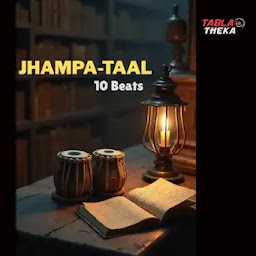Welcome to the Tabla Theka blog, your trusted resource for learning tabla.

An Introduction to Rudra Taal
Rudra Taal is a significant and relatively uncommon taal (rhythmic cycle) in Hindustani classical music. It is a complex cycle of 11 matras (beats), which places it in the vishamapadi (asymmetrical) category of taals. Due to its profound and majestic character, Rudra Taal is often performed in Vilambit (slow) and Madhya (medium) laya. This taal's depth and gravity give it a special place in classical performances, particularly in Khyal singing and instrumental music.

























